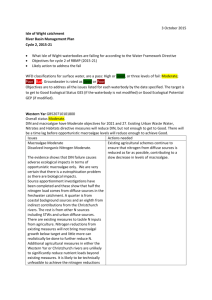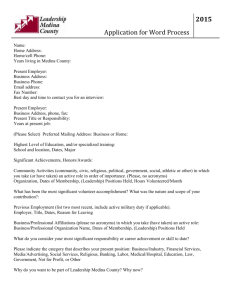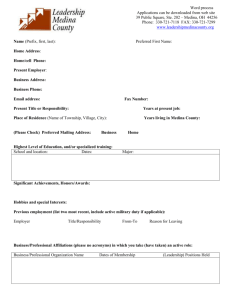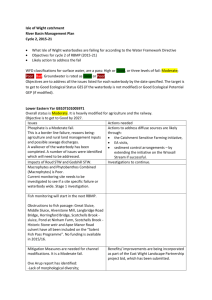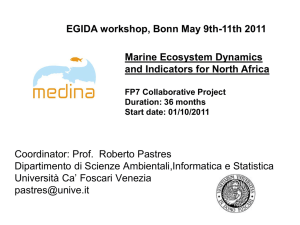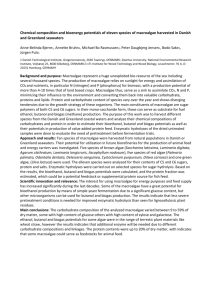Click
advertisement
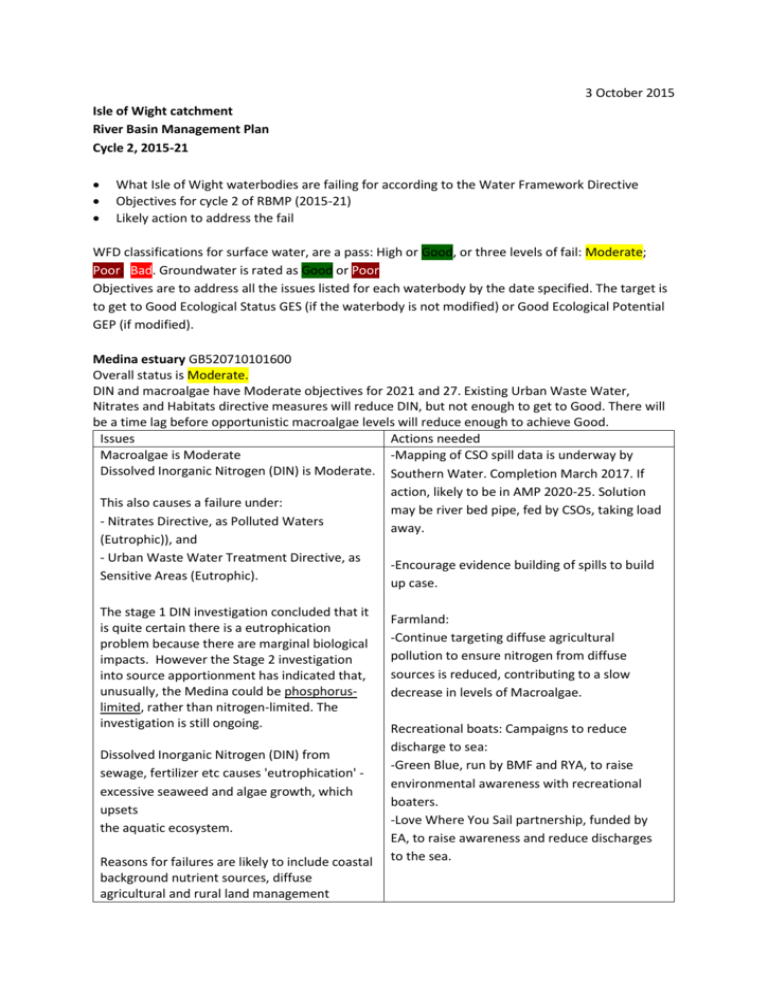
3 October 2015 Isle of Wight catchment River Basin Management Plan Cycle 2, 2015-21 What Isle of Wight waterbodies are failing for according to the Water Framework Directive Objectives for cycle 2 of RBMP (2015-21) Likely action to address the fail WFD classifications for surface water, are a pass: High or Good, or three levels of fail: Moderate; Poor; Bad. Groundwater is rated as Good or Poor. Objectives are to address all the issues listed for each waterbody by the date specified. The target is to get to Good Ecological Status GES (if the waterbody is not modified) or Good Ecological Potential GEP (if modified). Medina estuary GB520710101600 Overall status is Moderate. DIN and macroalgae have Moderate objectives for 2021 and 27. Existing Urban Waste Water, Nitrates and Habitats directive measures will reduce DIN, but not enough to get to Good. There will be a time lag before opportunistic macroalgae levels will reduce enough to achieve Good. Issues Actions needed Macroalgae is Moderate -Mapping of CSO spill data is underway by Dissolved Inorganic Nitrogen (DIN) is Moderate. Southern Water. Completion March 2017. If action, likely to be in AMP 2020-25. Solution This also causes a failure under: may be river bed pipe, fed by CSOs, taking load - Nitrates Directive, as Polluted Waters away. (Eutrophic)), and - Urban Waste Water Treatment Directive, as -Encourage evidence building of spills to build Sensitive Areas (Eutrophic). up case. The stage 1 DIN investigation concluded that it is quite certain there is a eutrophication problem because there are marginal biological impacts. However the Stage 2 investigation into source apportionment has indicated that, unusually, the Medina could be phosphoruslimited, rather than nitrogen-limited. The investigation is still ongoing. Dissolved Inorganic Nitrogen (DIN) from sewage, fertilizer etc causes 'eutrophication' excessive seaweed and algae growth, which upsets the aquatic ecosystem. Reasons for failures are likely to include coastal background nutrient sources, diffuse agricultural and rural land management Farmland: -Continue targeting diffuse agricultural pollution to ensure nitrogen from diffuse sources is reduced, contributing to a slow decrease in levels of Macroalgae. Recreational boats: Campaigns to reduce discharge to sea: -Green Blue, run by BMF and RYA, to raise environmental awareness with recreational boaters. -Love Where You Sail partnership, funded by EA, to raise awareness and reduce discharges to the sea. pollution, sewage discharges and urban diffuse sources. Medina Shellfish Water Protected Area fails for high concentrations of faecal bacteria in shellfish flesh. Medina has never complied with guideline bacterial standard. To attain compliance by achieving 8 out of 10 years, Medina needs to reduce E.coli pollution by 91-100%. There is no commercial harvesting of shellfish, due to lack of stocks and prohibited status. Cowes Shellfish Water Protected Area fails for high concentrations of faecal bacteria in shellfish flesh. Cowes has achieved compliance with the guideline standard 4 times in 10 years. It needs to reduce E.coli pollution by 56-95% to comply. Invertebrates are a Moderate fail. New investigation - the classification is based on a single Natural England sample point so there is low confidence in the data. EA to work with Southern Water to progress upgrading the sewer network models (as an AMP6 investigation) and to assess the impact of storm overflows into Medina so future improvements can be implemented. Work with stakeholders to reduce other sources of bacterial pollution such as diffuse pollution from agricultural run-off, wrong connections or discharges from boats. Actions as Medina. Appropriate?
